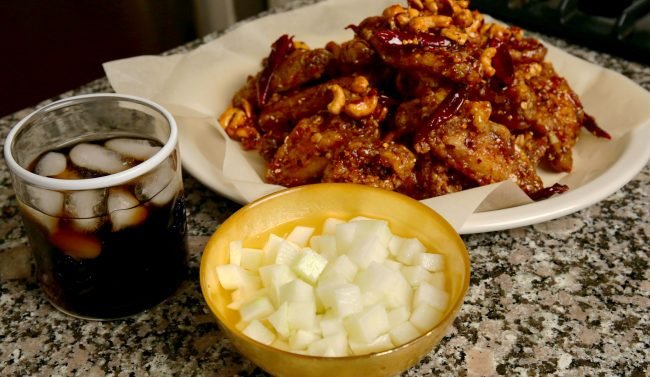If you have ever been to a Korean or Japanese restaurant, you may have seen dishes made with white radish or root vegetables.
These vegetables are essential ingredients in Asian cuisine, and two of the most popular root vegetables are Korean radish and daikon.
Both are widely used in many different dishes due to their unique flavor profiles and health benefits.
In this blog post, we will explore the differences between these two vegetables to help you decide which one is best for your next meal.
What is Korean Radish?

Korean radish, also known as mu or moo (무), is a cylindrical-shaped root vegetable that comes from Korea. It has a slightly sweet, crisp, and watery texture with a white-colored flesh inside.
In Korean cuisine, this radish is often used as an ingredient in kimchi – a traditional fermented side dish made of cabbage or other vegetables mixed with various seasonings – which is served at nearly every meal. It can also be pickled or stir-fried for use in soups, stews, salads, and side dishes.
What is Daikon?
Daikon (大根) is a long white radish that originated from Japan but has since spread across Asia. The name daikon means “big root,” reflecting the size of this vegetable that can reach up to 20 inches long and 4 inches wide.
In Japanese cuisine, daikon is often served grated as a condiment for tempura (deep-fried batter-coated seafood and vegetables) dishes. It can also be boiled, simmered, pickled whole or cut into small pieces called Takuan (沢庵).
Similarities Between Korean Radish and Daikon
Despite coming from different countries and having distinct flavors, there are some similarities between these two root vegetables.
For one thing they both belong to the family Brassicaceae, which includes other vegetables such as Brussels sprouts, cabbage, and broccoli. They also share similar nutritional profiles, containing high levels of vitamin C, fiber, and antioxidants.
Another similarity is their versatility in cooking methods. Both Korean radish and daikon can be eaten raw or cooked and are commonly used as ingredients in salads, pickles, stews, soups stir-fries or grilled dishes.
Differences Between Korean Radish and Daikon
While Korean radish and daikon may look similar from afar with their white flesh inside, they have distinct differences that set them apart.
The first notable difference is their shape. Korean radishes are usually shorter (about 3-4 inches) than daikons but have a larger diameter (about 2-3 inches). This makes them easier to work with when using a mandoline slicer or shredding for pickling.
The second difference is in flavor. Korean radishes have a mild sweetness that gives way to a peppery taste while daikons have a more pungent flavor with slight earthy notes. It’s worth noting that the age of the vegetable affects its flavor too – Younger daikons are sweeter while older ones become more pungent.
Korean Radish vs Daikon: How to Choose Between Them?
Choosing between these two root vegetables depends largely on what dish you plan to make and your personal preferences.
If you’re looking for a milder taste for dishes like kimchi or pickles then Korean radish is the choice for you.
However, if you prefer stronger flavors like those found in Japanese cuisine then daikon might be the better option.
When it comes to texture both vegetables are fairly similar with crispy exteriors but slightly different interior textures – Korean radishes being more succulent compared to the denser interior of Daikon
Nutritional Comparison of Korean Radish and Daikon
In terms of nutritional value, both Korean radish and daikon are high in vitamin C, fiber, and antioxidants. However they do have some differences in micronutrient content.
Korean radish is a source of potassium while Daikon has slightly higher levels of calcium and magnesium . Potassium can help regulate blood pressure while calcium and magnesium are important for maintaining strong bones.
Conclusion
Korean radish and daikon may look similar but have distinct differences in flavor, texture, shape, and nutritional values that determine which one you choose for your next recipe or meal. While both vegetables are versatile enough to be used in various dishes from salads to stews or pickles to kimchi , your personal preference will be the deciding factor. In the end it’s always good to explore different Asian vegetables and incorporate them into your cooking for a healthier diet.
Jenny has always been passionate about cooking, and she uses her platform to share her joy of food with others. Her recipes are easy to follow, and she loves giving tips and tricks to help others create their own unique culinary creations.

